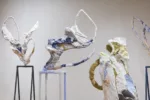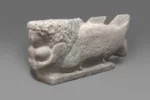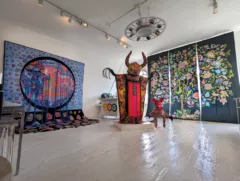You cannot miss the massive denim tapestry hanging at the entrance of Marginal Utility. Its surface was sanded-down to reveal an impression of excerpted text. The abrasive process Gabriel Martinez used was seen across Philadelphia this past summer. He installed Tonight is Forever at William Way LGBT Community Center, where he burnished queer ephemera from the Community Center’s archives onto stretched denim. The second iteration of analogous fabric artworks were a part of STONEWALL @ 50 at Leonard Pearlstein Gallery.
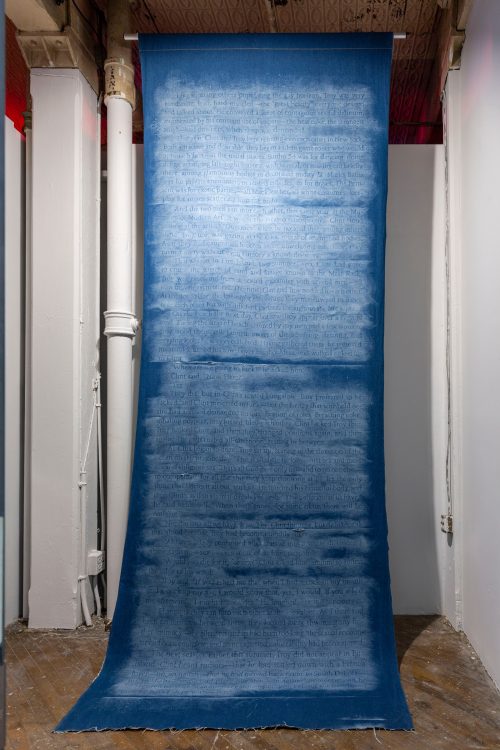
Over the summer, I co-curated the exhibition LGBTQ Legacies: Art, Archives, Analysis with Martinez and John Anderies, the Director of the John J. Wilcox, Jr. Archives in William Way, independent of these exhibits. We showcased the Harry Eberlin Photograph Collection and Martinez’s reproduction of them in his Archive series. The show was born out of our conversations amid my master’s thesis research on the relationship between archives, art history, and queer themes in art.
While I have worked with Martinez in the past, Bound to the Past is a departure from the project we collaborated on. Beyond the familiar medium, “New York, One Year Ago” is patently different in content from his other artworks. Martinez selected a quote from John Rechy’s “The Coming of the Night,” a book about a summer night in Los Angeles in 1981, to evoke the promiscuity of the time with the salacious details of a previous Fire Island affair between characters Clint and Troy. This tapestry is a prelude to the onset of AIDS that would decimate the queer community after the summer of 1981.
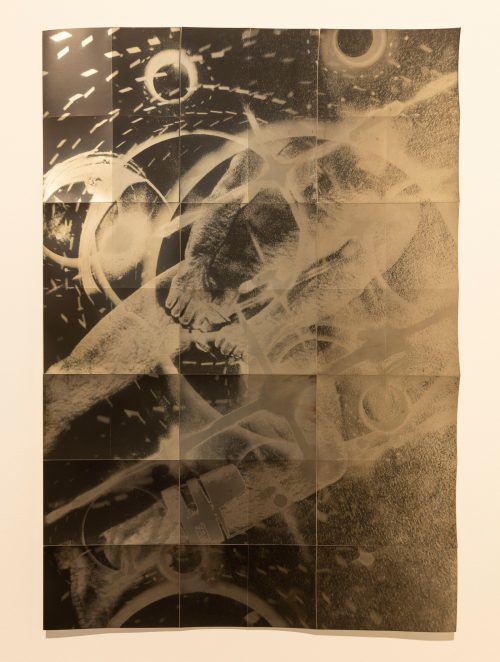
The gallery is divided by a T-shaped wall and coated in flat-black paint. A hallway guides viewers from the entry room toward a cavernous space flooded in red light, giving it the ambience of a leather bar’s backroom. Photographs of semi-nude men decorate the walls and amplify this aesthetic, only furthered by the empty sex swing suspended from the ceiling in the furthest room. Martinez hosted a leather clad bear during the opening who was suspended in the swing and only added to the backroom feel.
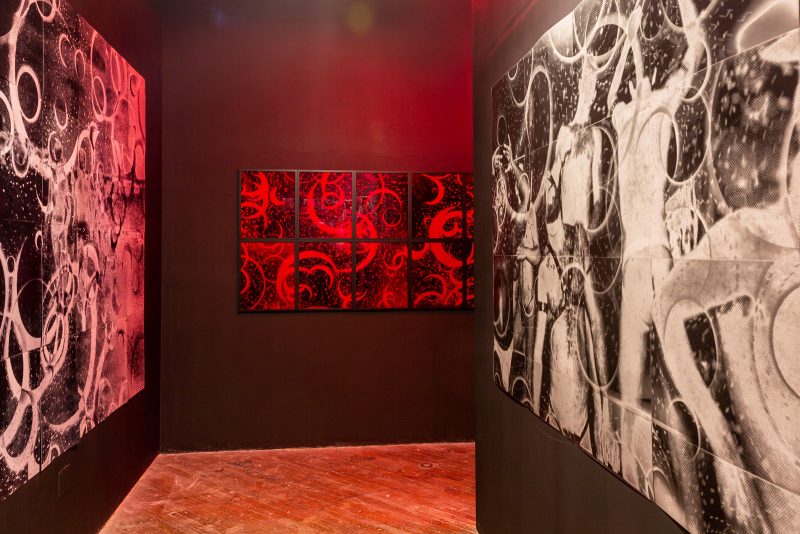
Martinez manipulated most of these photographs with solarization, a technique that overexposes and distorts the original image. The lasting effect is a menagerie of abstract forms and textures from half-tone advertisements and other archival materials that were blown up in scale, printed in fragments, and joined together to form quilt-like tapestries that reveal varying degrees of clarity. The artist employed silver gelatin prints for some of his compositions to provide an atmospheric, nostalgic glow. In others, he layered red mylar atop the photographs, adding a magazine-like sheen to them that calls to mind a porngraphic centerfold or eroticized advertisement from where the imagery was sourced.
The mirror ball, a symbol of disco music, is a part of nearly every artwork in Bound to the Past.Martinez exposed his photograms to light reflected off of disco balls to create the eclipse effect and the transitory-like patterns that surround them. At times, these eclipses overlap to form fortuitous biohazard symbols that some folx associate with an HIV-positive status. The rampant sexuality prevalent in the disco scene and the genre’s decline in the 1980s stands as a poignant metaphor for the impact of the AIDS epidemic on the queer community. Devoid of figures and brimming with biohazard signs, “Bound to the Past (red night)” exists as a liminal space situated between these starkly contrasted periods of liberated sexuality and the stigmatization of gay sex.
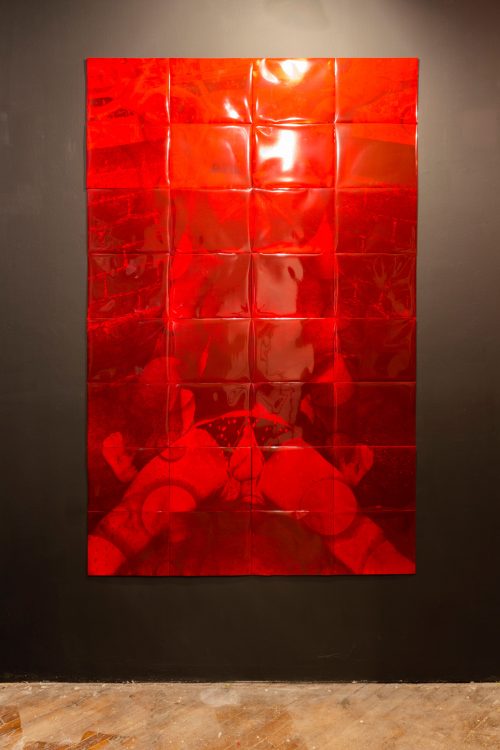
Martinez isolated the summer of 1981 as the cultural, political, and sexual turning point for queer people because this was generally when HIV/AIDS first entered public knowledge. Prior to that particular summer, the gay community experienced sexual freedoms following successes in early Gay Libertation efforts. The bacchanalia came to a head when the New York Times published an article titled “Rare Cancer Seen in 41 Homosexuals” on July 3, 1981, the first cases of would later be known as HIV/AIDS.
The years following this article were witness to the death of disco, the continued rise of the Moral Majority in conservative politics, and the global AIDS epidemic. The United States became home to the vilification of the four H’s (homosexuals, heroin users, hemophiliacs, and Haitians) out of blatant ignorance and resistance to public health interventions like safe sex education or needle exchanges. These issues have evolved in the contemporary moment into concerns over safe injection sites to fight the opioid crisis or the socioeconomic barriers that inhibit equitable access to health care.
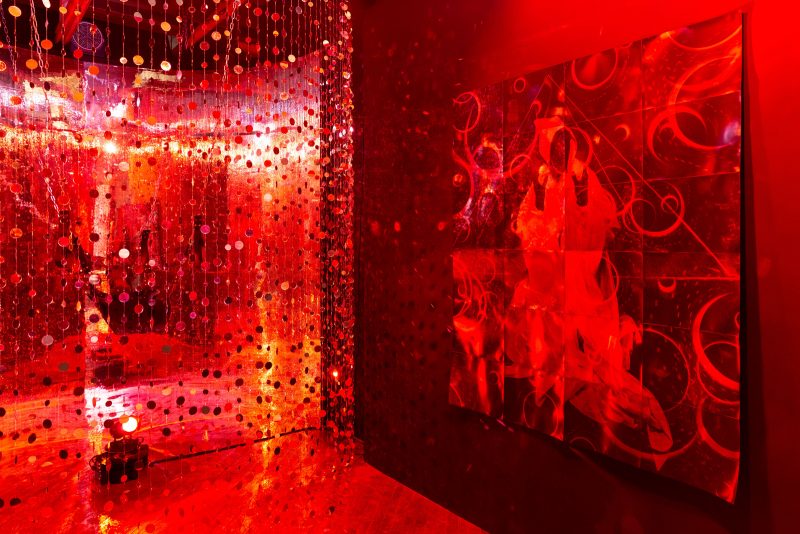
José Esteban Muñoz famously detailed a framework that looked to history to inform a queerer future in his seminal text Cruising Utopia. Martinez followed a similar logic in Bound to the Past. He turned to the summer of 1981 as an opportunity for younger generations to reflect upon the faults of the past and envision a better path forward. The advent of PrEP today, a medication that inhibits HIV-transmission, but does not protect against other sexually transmitted infections, has enlivened concerns around safe sex and public memory of HIV/AIDS. This exhibition looks to the past to avoid repeating the previous failures on these fronts.
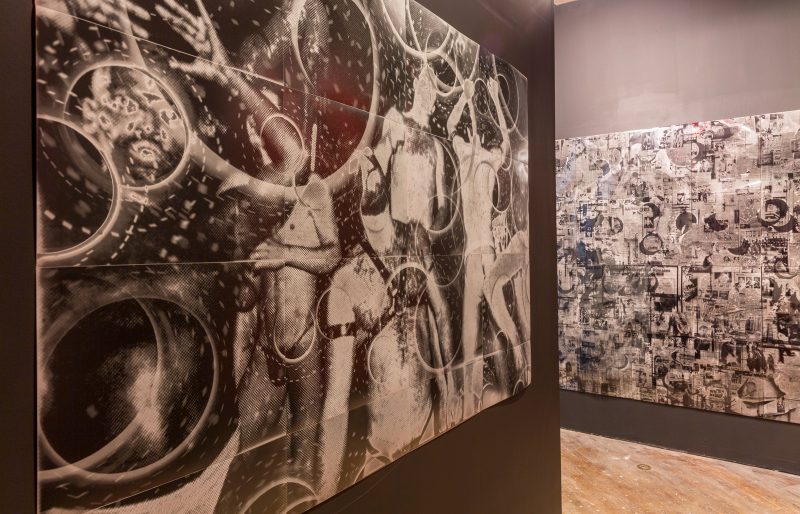
Bound to the Past culminates with the red-lit backroom where “Queer Eclipse (wizard)” hangs. This Virgin-like figure dressed in flowing robes floats among celestial forms and serves as an intercessor between the past and future generations. The wizard simultaneously invokes the sexual energy of the pre-AIDS era and reminds viewers of the toll that the epidemic took on the queer community. By looking to the past, Martinez encourages a stigma-free future where sexuality is expressed freely and practiced safely.
Gabriel Martinez’s “Bound to the Past,” Marginal Utility, Philadelphia, September 6th – October 20th, 2019
Bio
Michael J. Carroll resides in Philadelphia and works in the Metadata and Digitization Services department of Temple University Libraries on diverse digital projects. He recently graduated from Tyler School of Art studying modern and contemporary art history, with a focus on LGBTQ artists and queer theory, in hopes of continuing his career in the galleries, libraries, archives and museums field.


